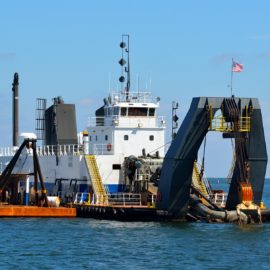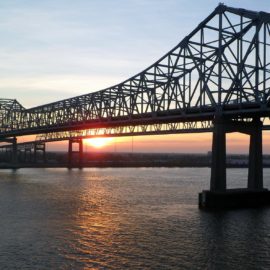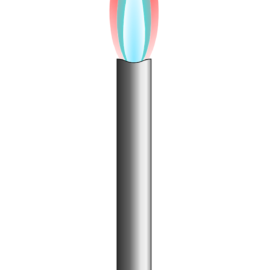
Go to the WWII museum and you can learn that this was the way they used to build ridges. But today the term means something different and that difference is being shown at Spanish Pass at Venice.
Excavators and bulldozers rolled into place Tuesday as a chocolatey plume of sandy water spilled out of a pipeline near Venice. “Café au lait,” joked John Helmers, Plaquemines Parish’s director of coastal resources, before the freshly dredged material turned from a deep caramel to an inky brown as more sand was pulled from the depths. Here at Spanish Pass, just a few hundred feet from the Mississippi River’s west bank, Louisiana is building a 7-mile-long ridge of land and marsh to attenuate the force of the storm-driven Gulf of Mexico. The $100 million project, funded with money from the 2010 BP oil disaster settlement, is part of the state’s 50-year, $50 billion effort to bolster Louisiana’s natural buffer against hurricanes. “This is almost at the front lines of the surges that are propagating up the Barataria Basin,” said Bren Haase, executive director of the state Coastal Protection and Restoration Authority. “It can slow the water that would be moving north with the storm surge and still those waves.”
nola.com
Dredge and fill from offshore to the shore. A lot of sand!
To build the ridge, a contractor is dredging 10.7 million cubic yards of sand, water and mud – enough to fill the Caesars Superdome 2½ times – from a sand bar in the river and pumping it five miles west into Spanish Pass. The project, the largest ridge and marsh restoration undertaking in coastal agency’s 16-year history, is to be completed by September. The area was once a cypress swamp, said Helmers, who watched it convert to open water over the past 30 years. Oil and gas exploration canals that were dug through the swamp let saltwater intrude into the basin, killing the vegetation. Too, the leveeing of the river in the early 20th century cut off the swamp’s source of new sediment. While cypress trees are unlikely to return, the Spanish Pass project offers the area “a new beginning,” Helmers said. Once the ridge is complete, contractor Weeks Marine will plant native tree species, building on parish-sponsored plantings done nearby with help from an environmental nonprofit. “Ten years from now, this is going to be an awesome place,” Helmers said, watching muddy water spew from the dredge pipe.
A new beginning for the parish, one that should help to stem the flooding.
Plaquemines Parish President Kirk Lepine said the project will go a long way toward restoring some of the area’s lost habitat, adding it was a “much-needed first step” toward adding more storm protection for the southern portion of his parish. “We still believe in Venice,” he said. Coastal authority chairperson Chip Kline said the project also shows Louisiana’s commitment to using dredging as a tool to rebuild land. The authority has been criticized by some for a different method of building land, diverting sediment from the river into once-thriving marshes. Kline said the state will dredge almost half as much material over the next two years as it did in its first 15 years of existence. “In terms of the work going on and the dredging in the state, it’s increasing exponentially,” Haase said. “That’s really for three reasons: We’ve got the science backing it up in terms of the plan that we’ve got, the political will is there and despite the tragedy of the oil spill, it’s provided a significant source of funding.”
For many dredging is what is needed, not diversions. Dredging does not last as long and the cost is higher but seeing the fill fill the area is gratifying. A mix of both is probably the best.



